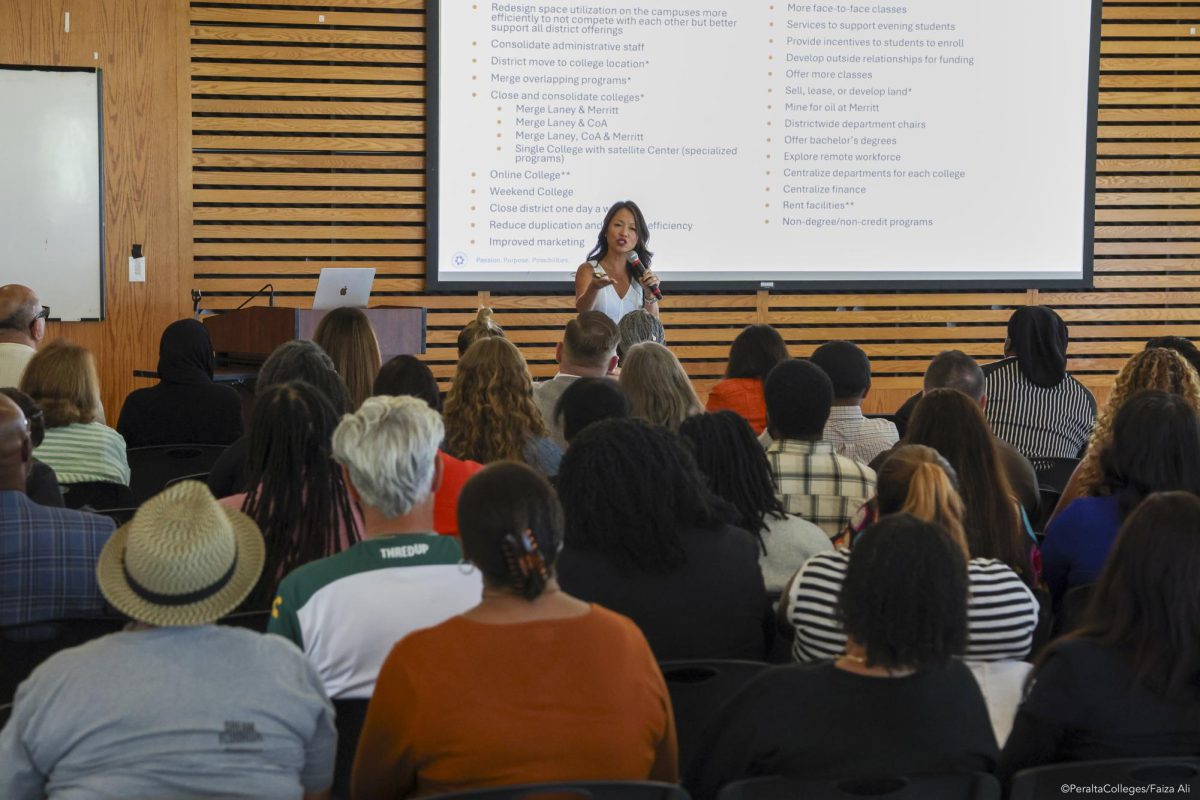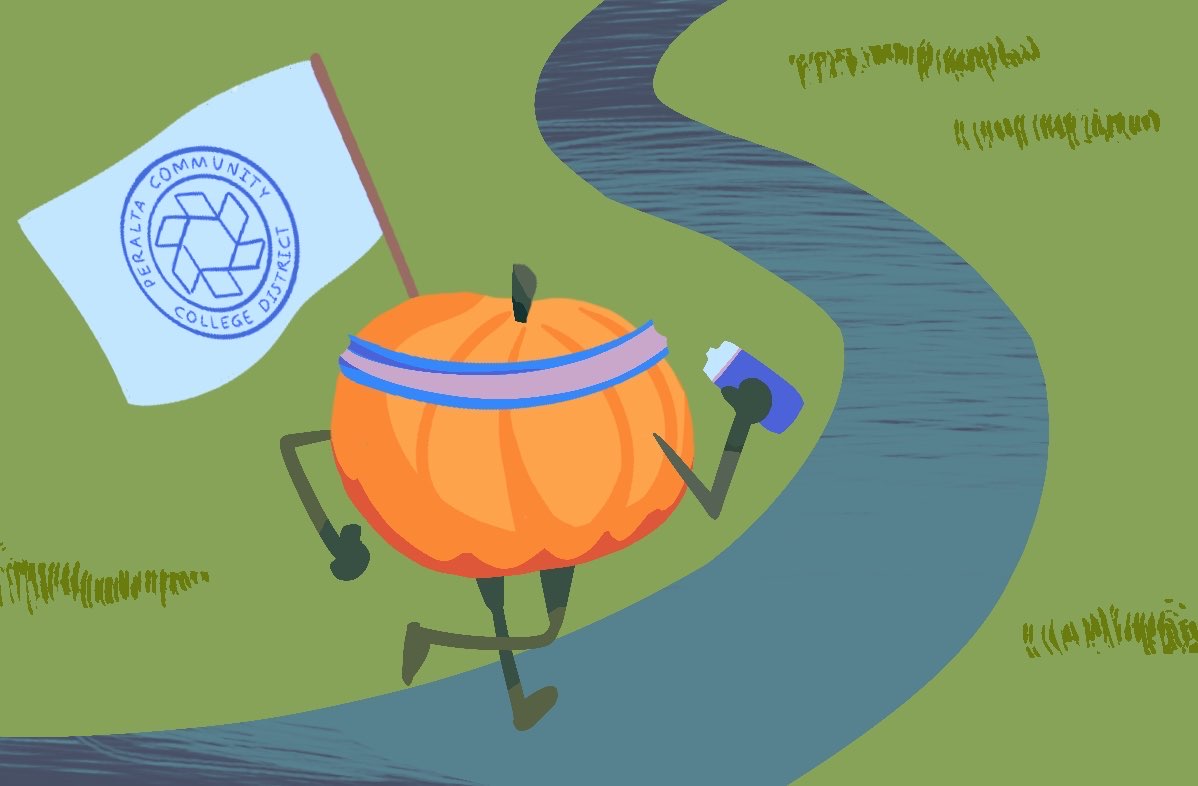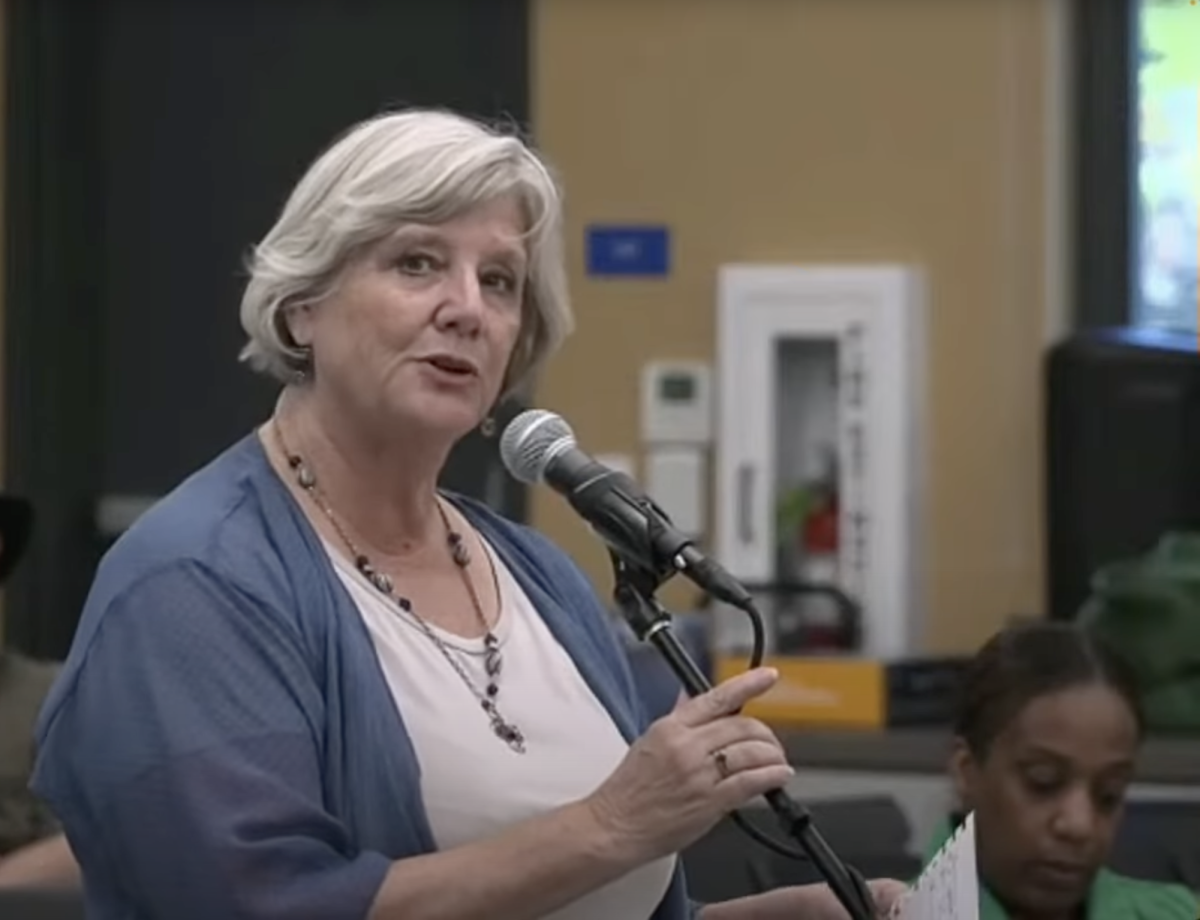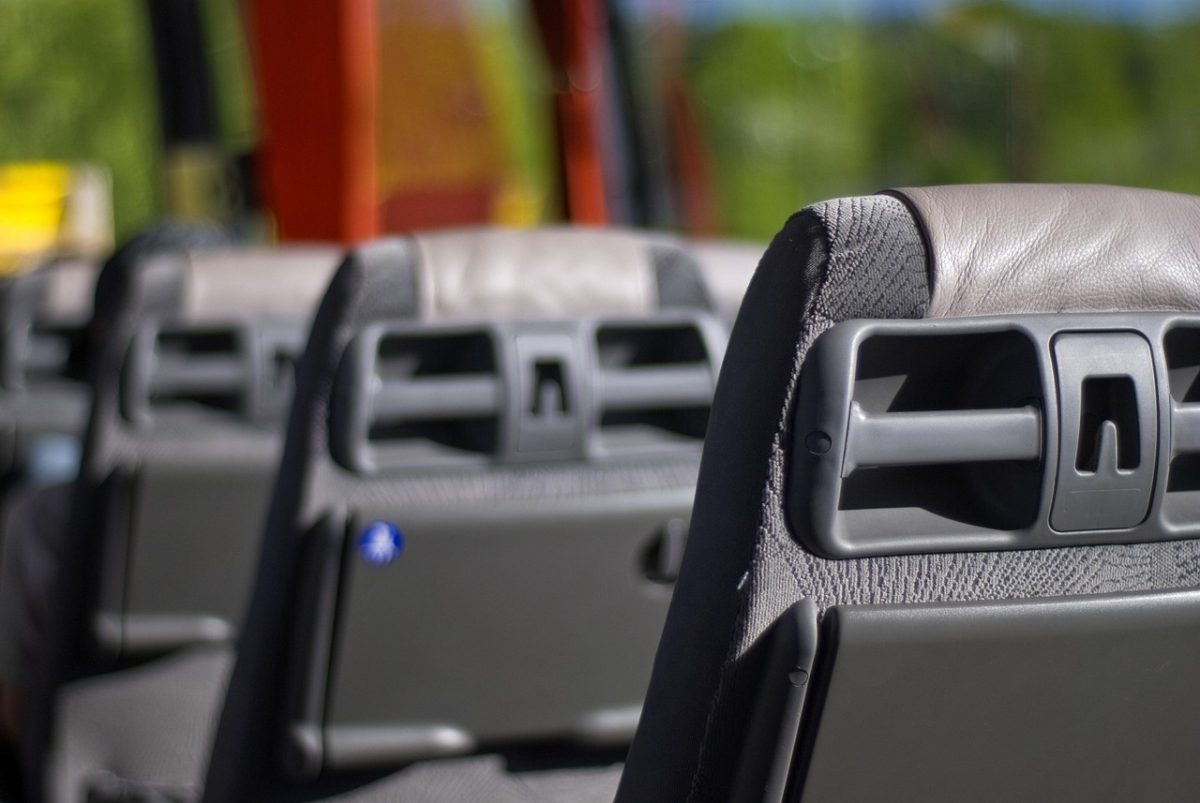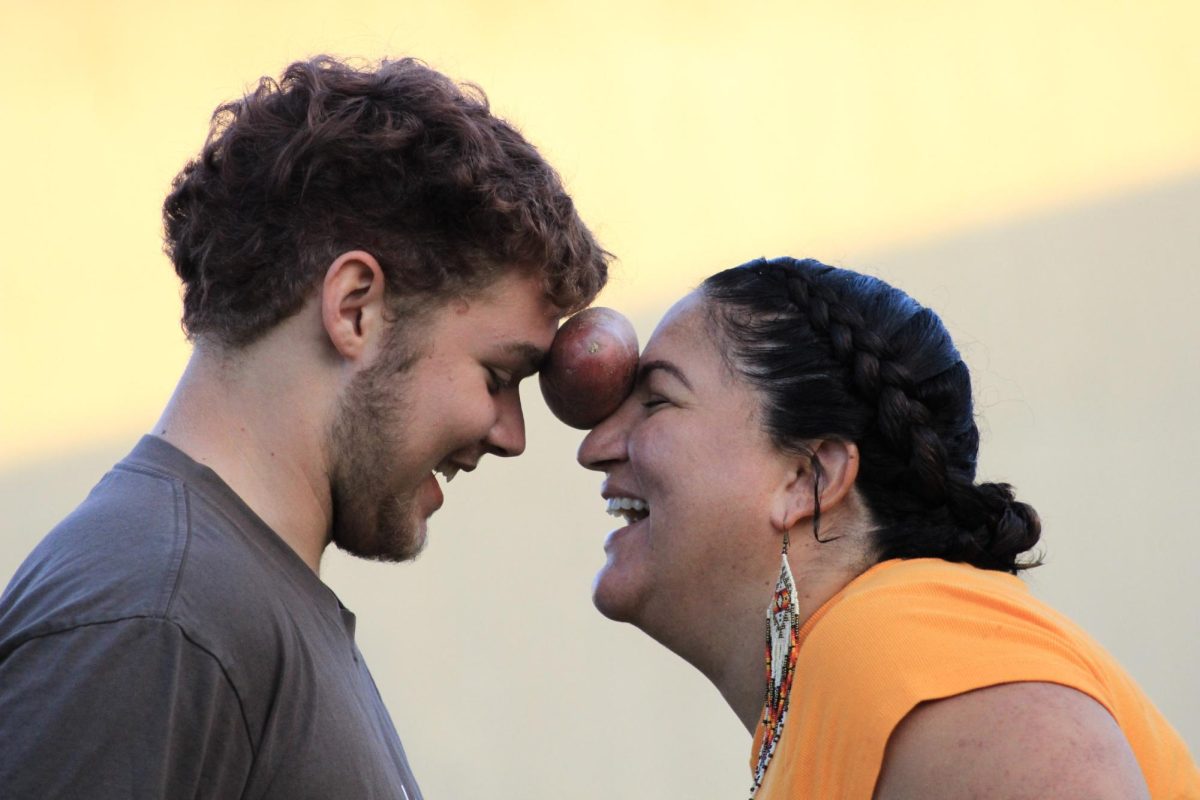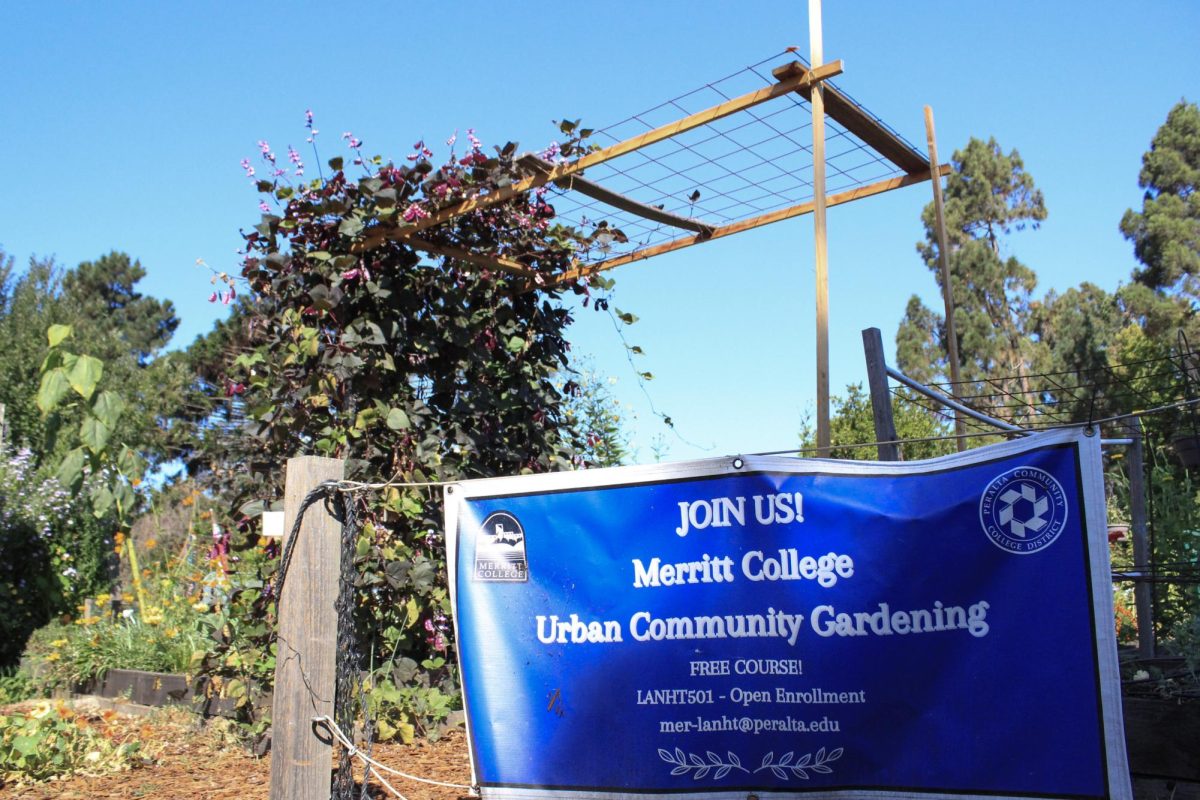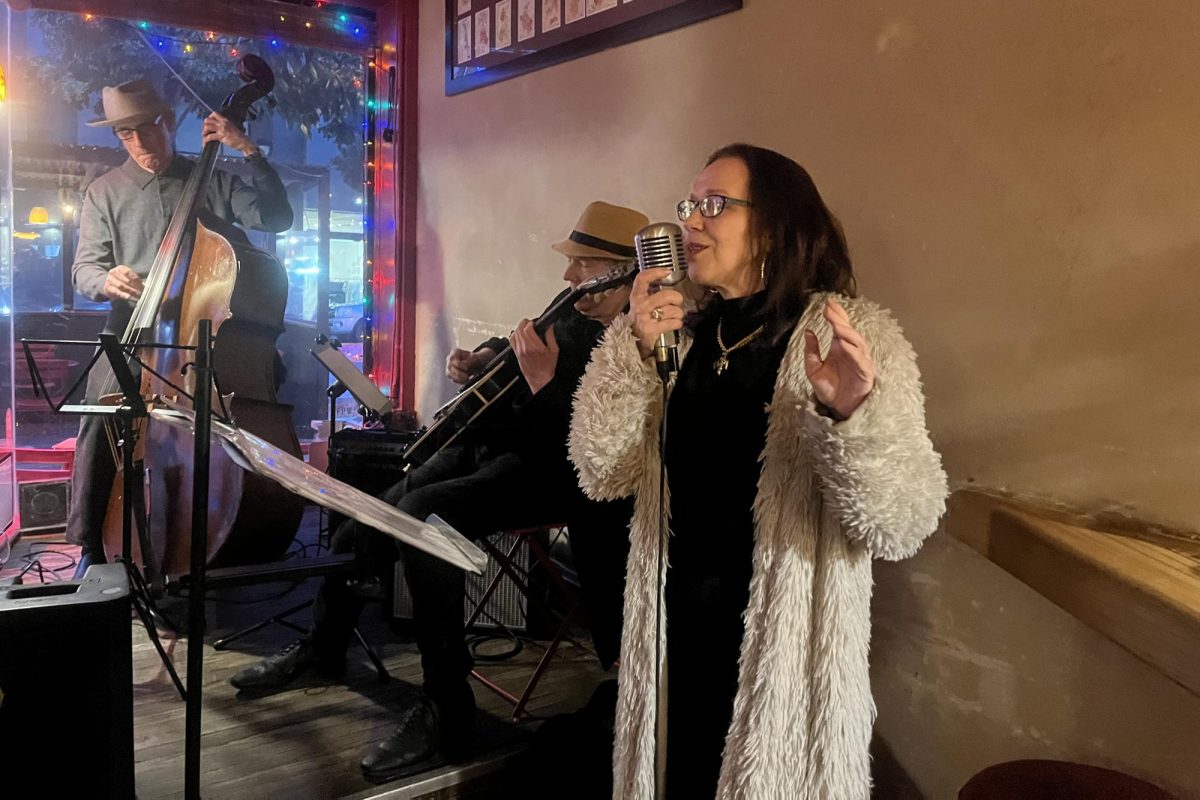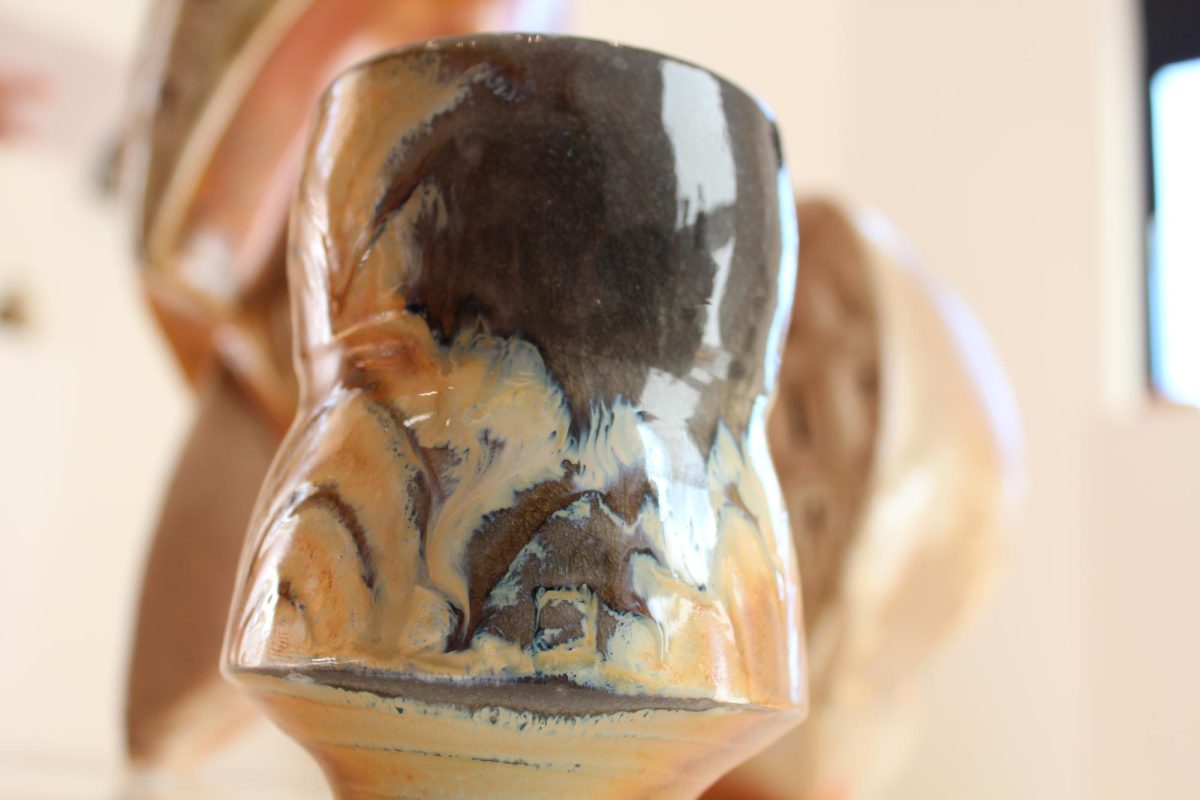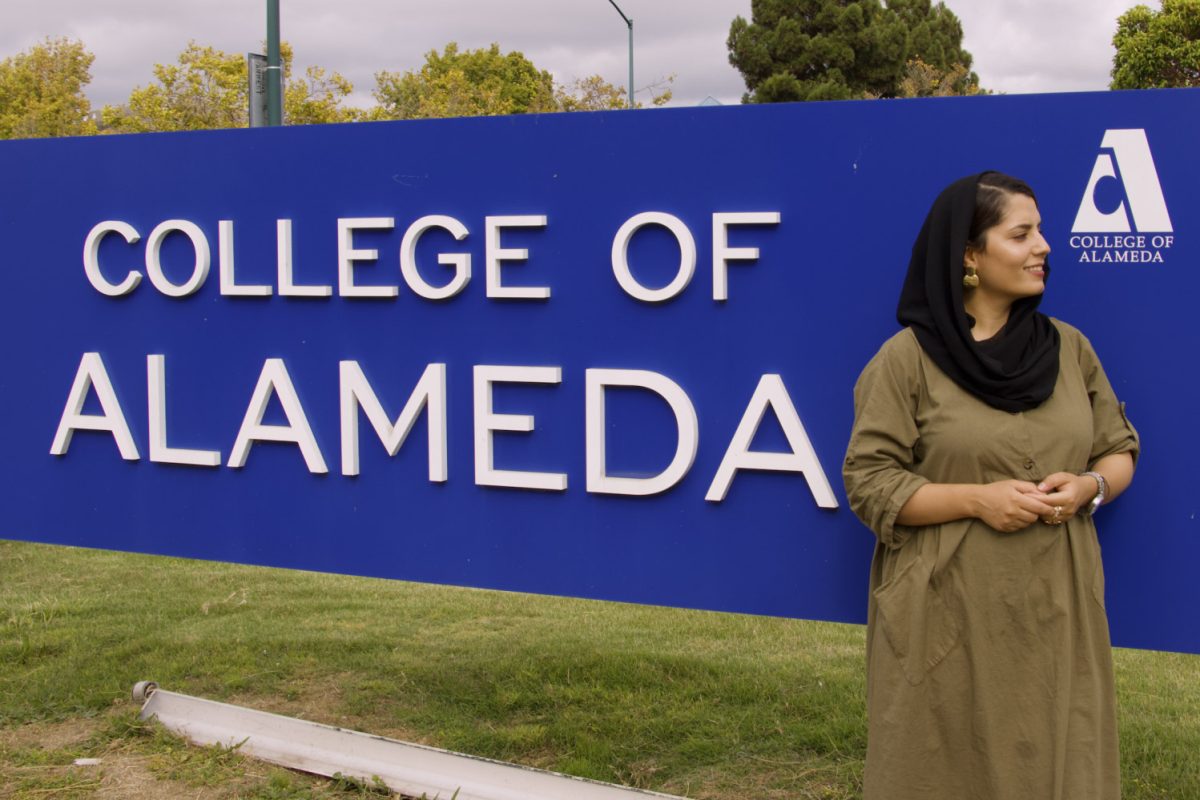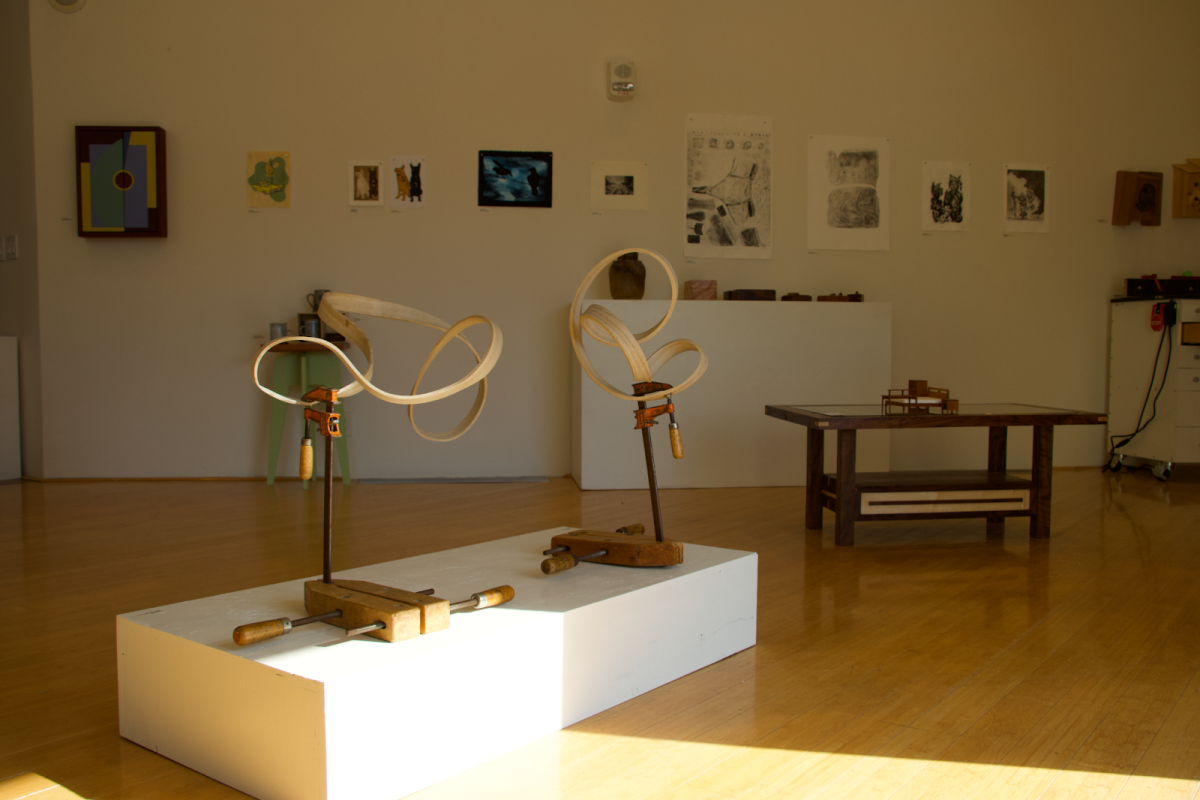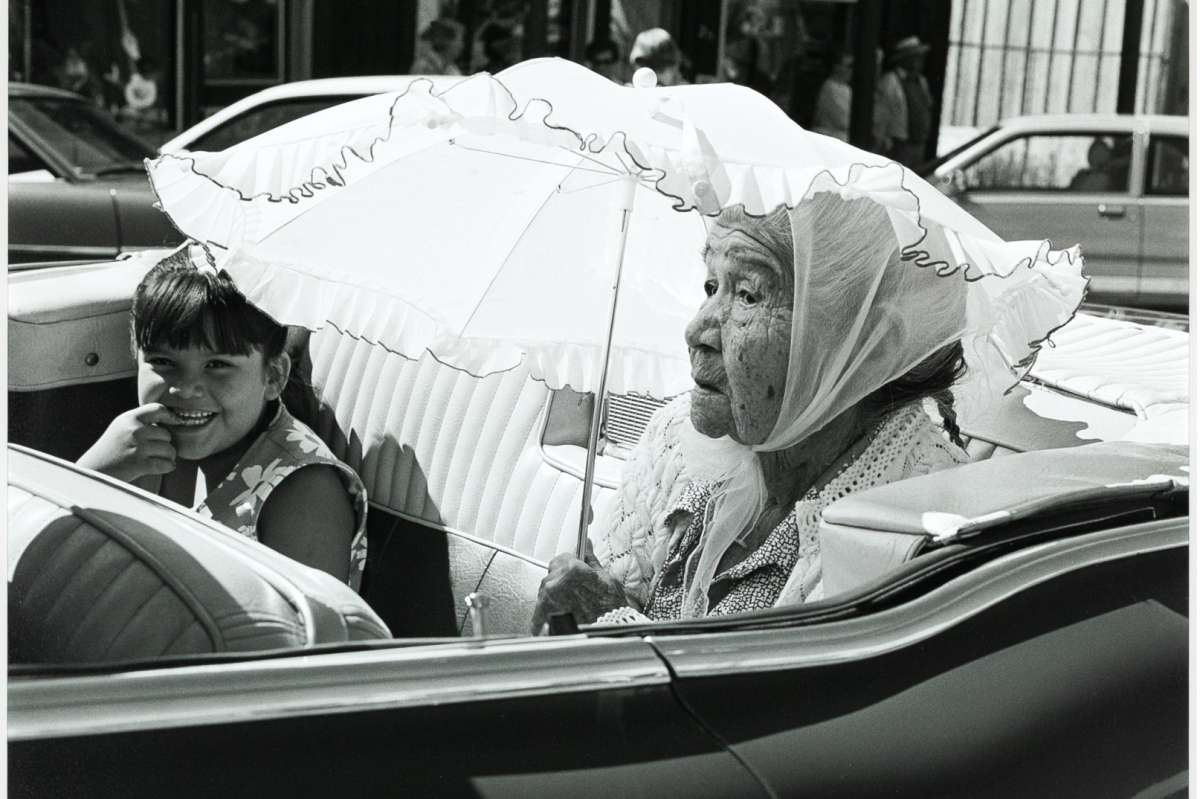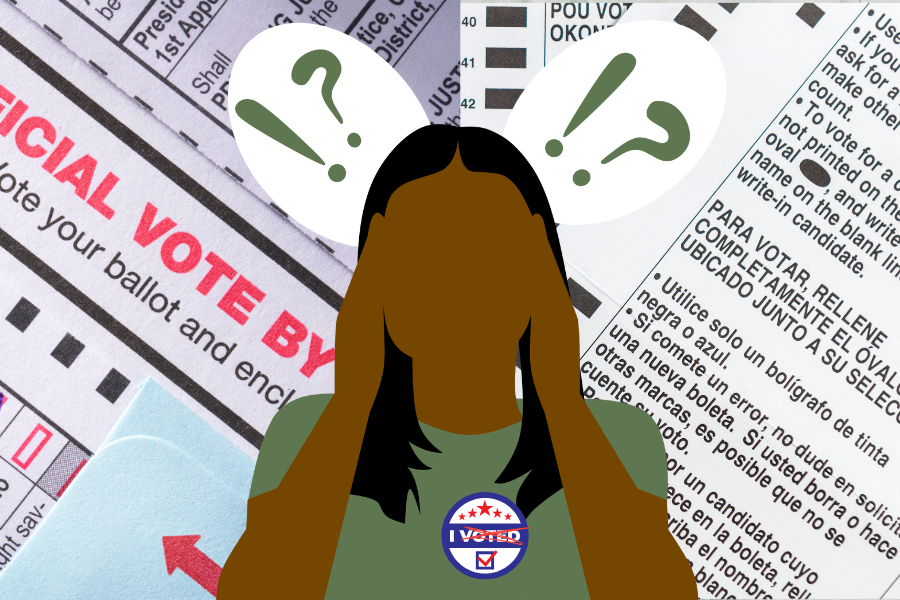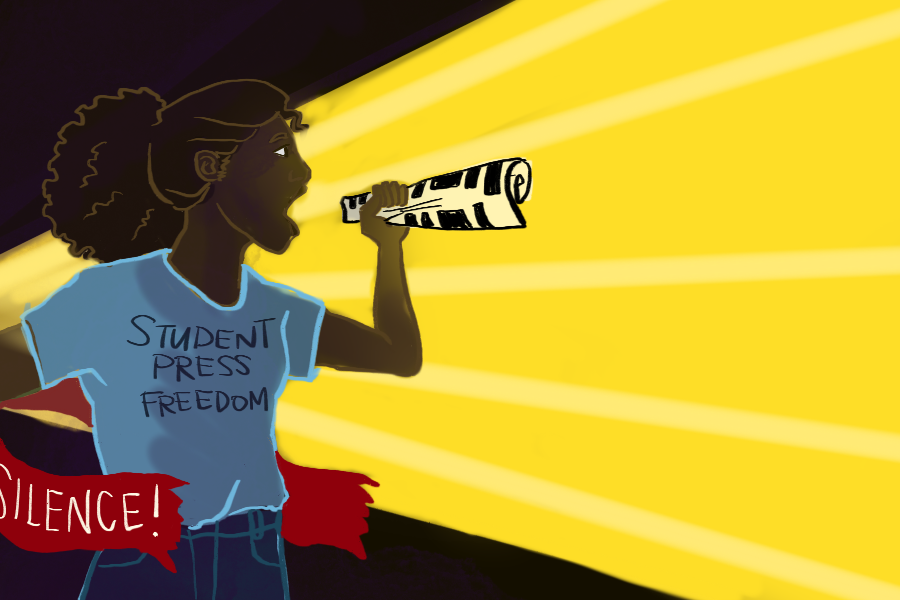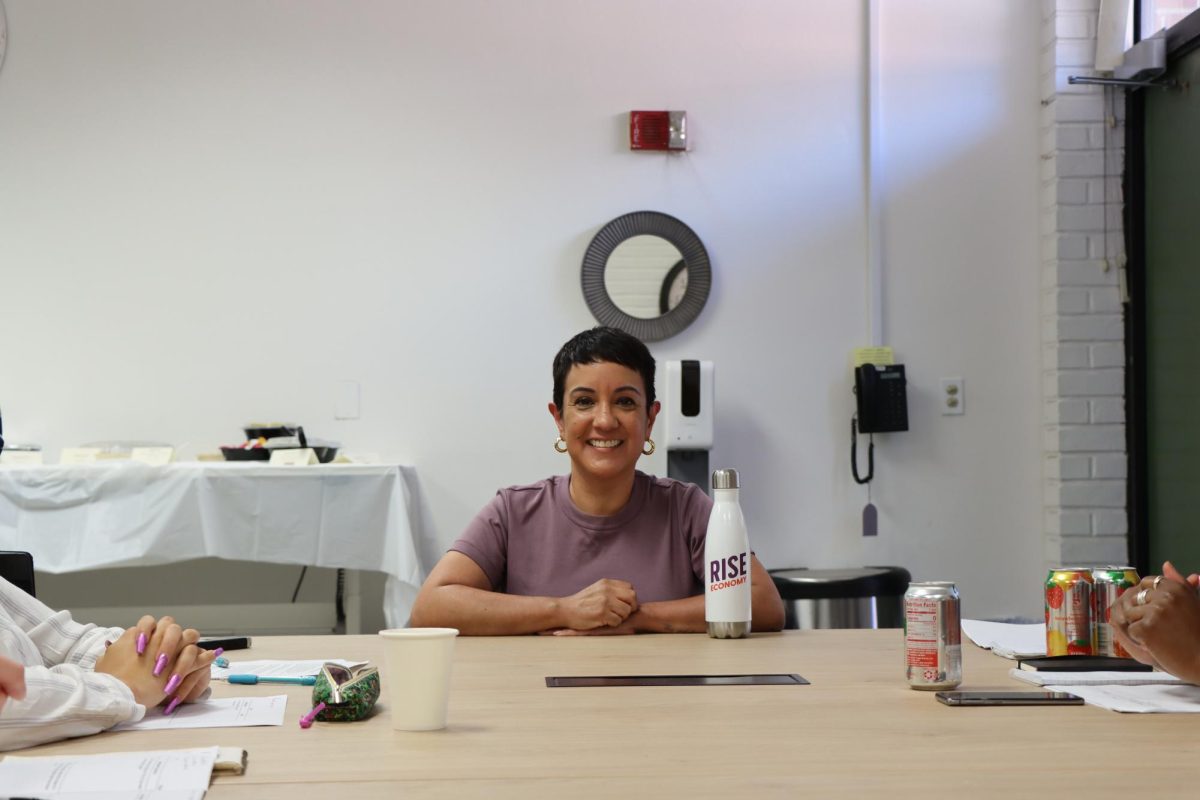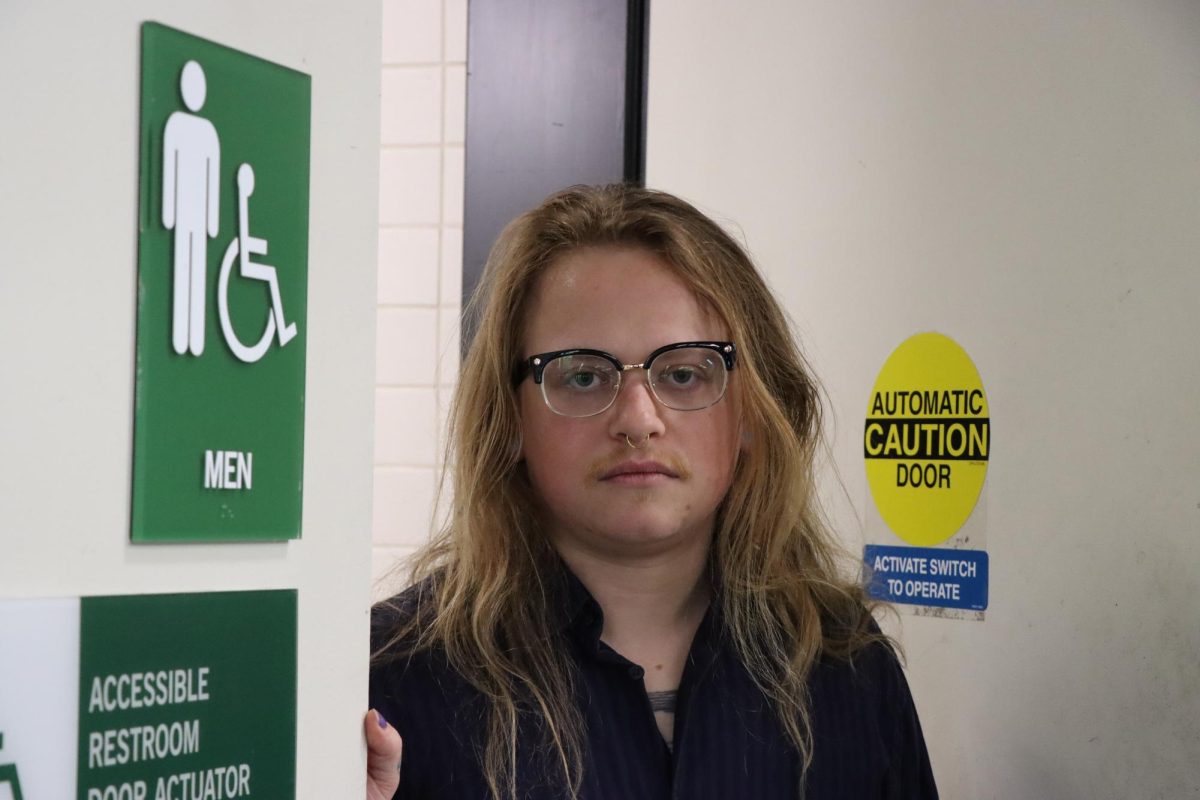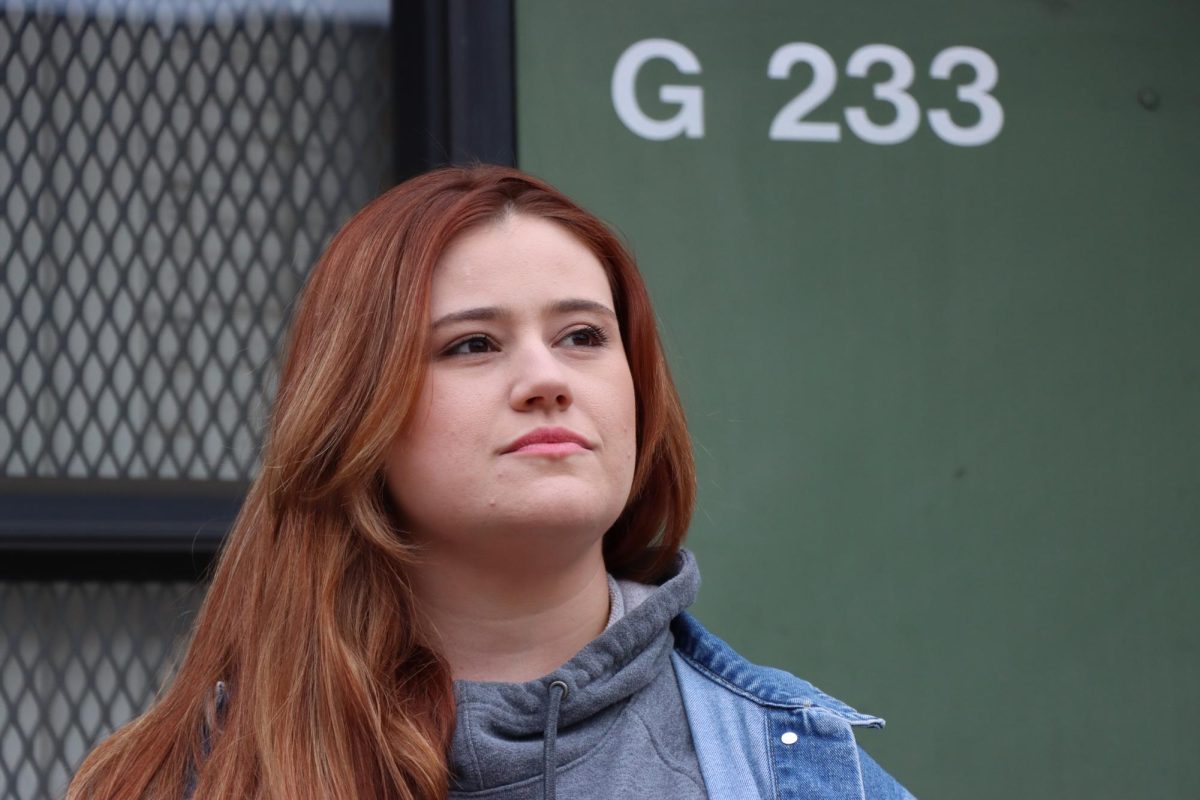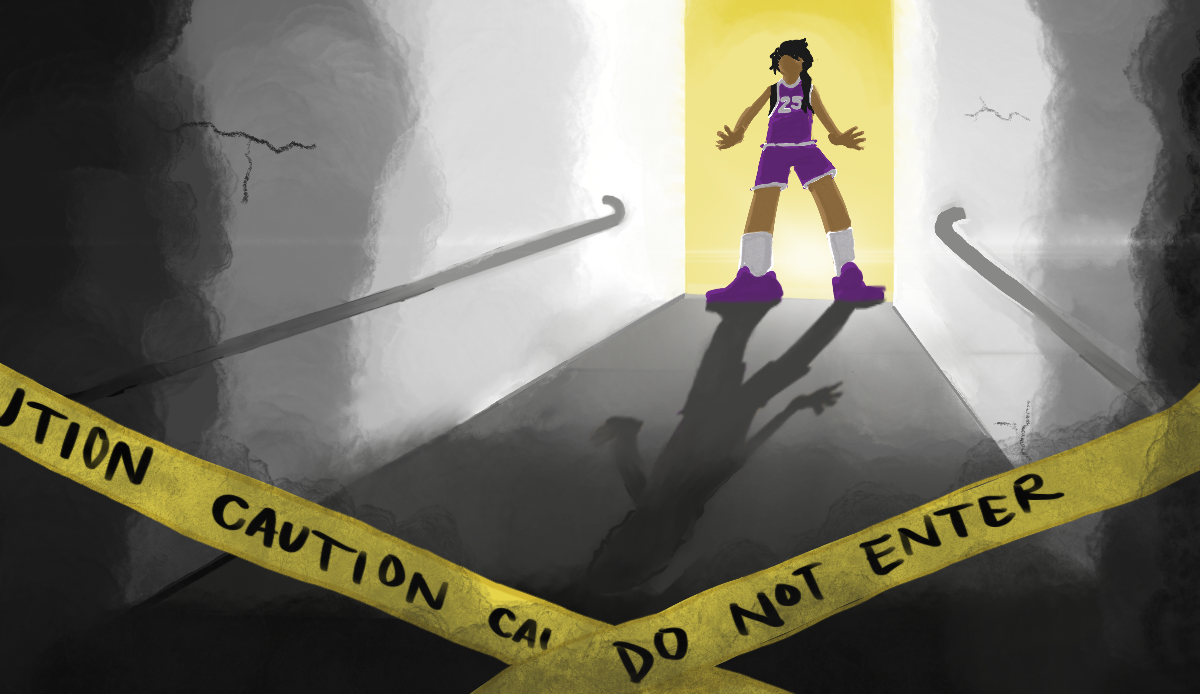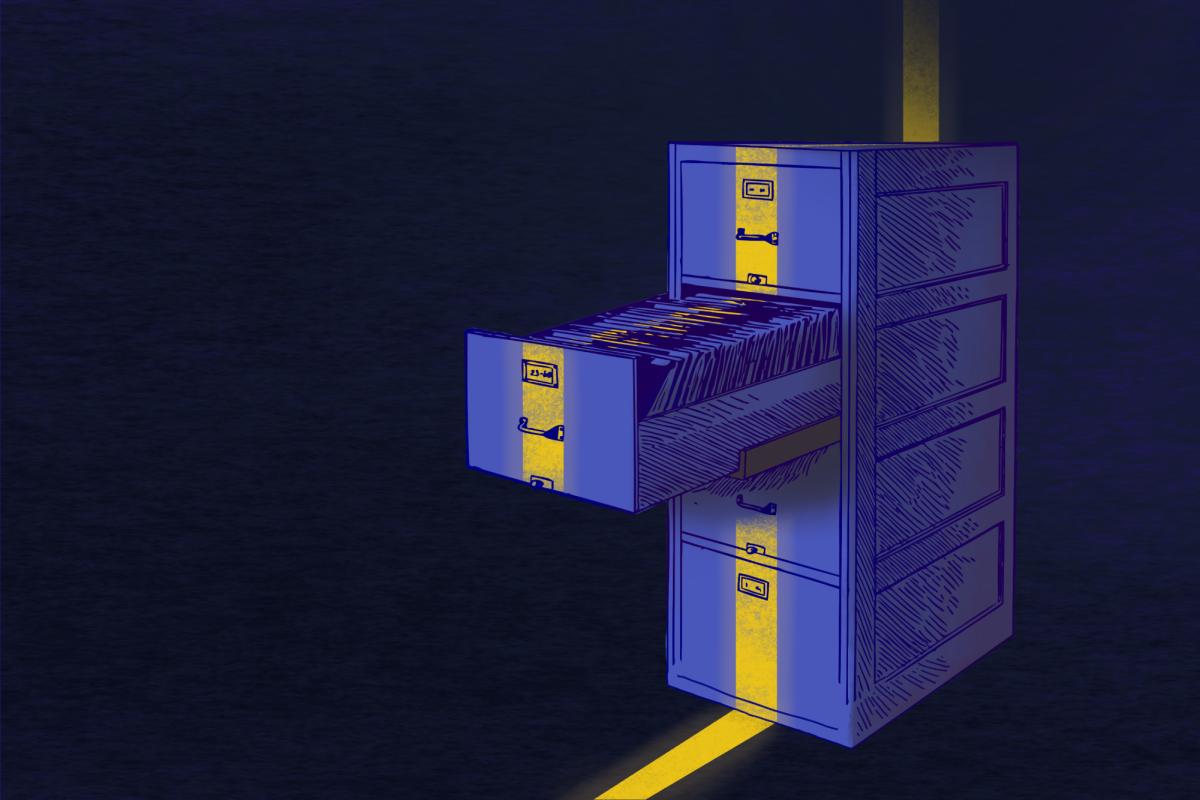Laney Library’s EcoArt exhibit encourages Earth-friendly art-making
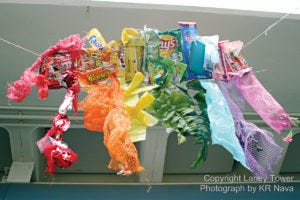
“Thank goodness for Generation Z,” says ceramic artist Mary Rose Czajka. “They will save us.”
Czajka’s installation, “Tidal Lagoons,” can be seen at the Laney College Library, where students’ final projects for the Laney College EcoArt Matters classes are now on display.
When you come into the library, prepare to learn more about relevant issues and saving the world. You will be struck by the art materials: they are the detritus we leave behind.
FROM TRASH, TREASURE
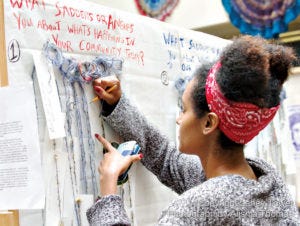 Instructors and artists Sharon Siskin Andre and Andre Singer Thompson, are both zealous environmentalists and political activists.
Instructors and artists Sharon Siskin Andre and Andre Singer Thompson, are both zealous environmentalists and political activists. They first began teaching the EcoArt Matters class in 2005 to connect environmental education and activism with creativity.
They conceptualized the class while working with children who were influenced by “nature deficit disorder” in New York. Some city children had absolutely no connection with the natural world.
The instructors found that creativity at a young age was the side door approach to our most urgent environmental and social injustice issues.
Delight them with relevant issues at an early age, teach them to care about the threats of rising CO2 levels and, as Czajka says, “they will save us.”
For Thompson and Siskin’s students, clean up days are one way the class finds their art materials. The class also makes field trips to the dump. Czajka told me that the class even has a guest pass.
BAT LADY SWOOPS IN
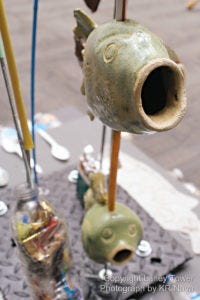 Czajka first got the idea for her installation when she took EcoArt 1 six years ago.
Czajka first got the idea for her installation when she took EcoArt 1 six years ago. First, she threw small pots on the wheel, trimmed off one end for the mouth and added tails. These were suspended at the top of thin plastic piping and moved around, atop plastic bottles filled with the refuse from the East Bay shoreline.
As she set up this installation, Czajka described a visit to the class by a woman who calls herself Bat Lady.
Bat Lady wears a bat costume and talks about how bats pollinate more than bees, how they produce guano that was once so crucial for fuel, how they make their bat houses, and where they belong on the food chain.
In the EcoArt Matters classes, Bat Lady applied bats to relevant issues around climate change and changing habitats. The class curriculum entailed many field trips and guest speakers.
CLEANING UP EARTH
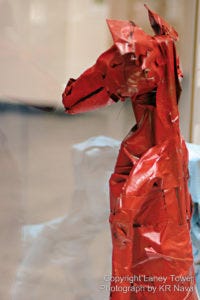 Czajka mentioned the many occupations that are part of keeping the earth clean. One of the lessons from the class is that we can be part of that clean-up.
Czajka mentioned the many occupations that are part of keeping the earth clean. One of the lessons from the class is that we can be part of that clean-up.Students in EcoArt Matters range in age and life experience. They become keenly aware of everything they do, from smoking cigarettes to watering the sidewalk.
They have merged some activities with the Creative Growth Art Center that serves adult artists with developmental, mental and physical disabilities. Some of these artists contributed to the exhibit.
In one display cabinet is Laney student Jennifer Adair Stejskal’s installation of Raku-fired creatures, drawing attention to the dying coral reef and the species that are threatened by rising levels of CO2.
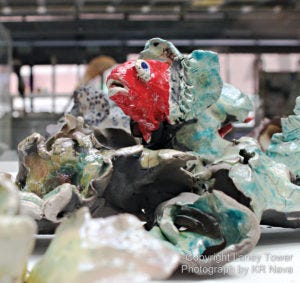 “A coral reef can be compared to an underwater rainforest due to the biodiversity of its habitat,” she wrote for the exhibit’s placard.
“A coral reef can be compared to an underwater rainforest due to the biodiversity of its habitat,” she wrote for the exhibit’s placard. “Global warming …is causing severe distress to marine life and those who depend on it for their survival, including humankind.”
A few feet away, a huge board bursting with ripped pages invites strangers to “share their thoughts and feeling about living in a world out of balance.” This is Julia Dashe’s installation, called “scintilla2016.”
Drawing from Joanna Macy’s ‘Work that Reconnects,’ Dashe encourages us to take a longer view of time — to see ancestors and descendants as allies in struggles to create a more economically, environmentally and socially just world.
URGENT ART
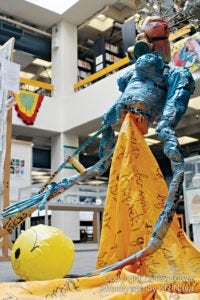 This exhibit merges Oakland’s Creative Growth Art Center, a studio with nation-wide reknown, and Laney artists. Their freedom and edginess are united under the Laney College Library.
This exhibit merges Oakland’s Creative Growth Art Center, a studio with nation-wide reknown, and Laney artists. Their freedom and edginess are united under the Laney College Library. Laney’s continued commitment to relevant issues within the community and to the defining issues of our time are on display in the Laney Library now. Through art and creativity, we just might be able to find that side-door approach to the moral, social and environmental enigmas that require urgent attention from all of us.


